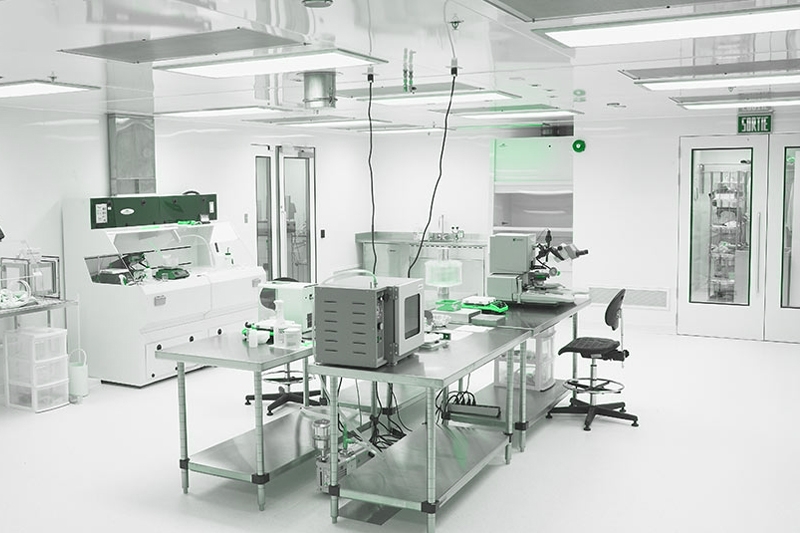In positive differential pressure cleanrooms, the internal pressure is greater than the external pressure to prevent the ingress of any contaminants through any opening—whether intended or accidental—in the cleanroom.
In negative differential pressure cleanrooms, the external pressure is greater than the internal pressure to prevent the egress of any potentially harmful compounds contained within the cleanroom.
Combined with appropriate temperature, humidity, and airflow level, proper differential pressure levels ensure both cleanroom designs work as intended. As such, it is essential to carefully measure and monitor pressure inside and outside of the cleanroom to confirm the differential remains within the acceptable range.
Industry professionals often employ visual gauges or meters to facilitate the identification of current pressure levels inside and outside of cleanrooms. The devices are designed to automatically calculate and output the difference between two pressure points in the cleanroom (typically two inlet points), eliminating the need for operators to manually monitor separate gauges and calculate the difference between the results. More advanced measuring instruments may offer additional capabilities for monitoring temperature, humidity, and other cleanroom parameters.
We offer Magnehelic gauges for these applications. They provide accurate measurement of pressure, pressure differential, and vacuum to 2% of full scale. In addition to cleanrooms, typical use cases include automatic valves, control equipment, and gas-air ratio controls.
CLEANROOM STANDARDS
The level of cleanliness required from a cleanroom depends on the industry and industrial application. For this reason, cleanrooms are available in numerous classifications, each of which denotes a specific level attainable based on the number and size of contaminants with the given space.
The International Organization for Standardization (ISO) categorizes cleanrooms from ISO 1 to ISO 9, with ISO 1 having the fewest contaminants per square meter. In addition to the number of particulates, the size of particulates also plays a crucial role in ISO classification. Contaminants are measured in microns, from 1μm to 5μm, with different cleanrooms offering different filtration capacities for each size. For example, cleanrooms with HEPA filters remove particulates as small as 0.3μm with 99.99% efficiency rates, while cleanrooms with ultra-low particulate filters remove particulates as small as 0.12μm with an efficiency rate of 99.999%.
The effectiveness of the mechanisms that facilitate cleanroom operations—including the filters—depend on many factors remaining within tolerable levels. These factors include pressure, temperature, humidity, and airflow, all of which can help or hinder the attainment and maintenance of proper cleanliness levels.
QUALITY CLEANROOM SOLUTIONS
Cleanrooms play a critical role in many sensitive industries and industrial applications. For these instruments to work correctly, maintaining proper differential pressures (among other factors) is essential.











